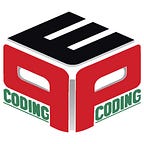Tech stacks are a list of technologies used to build a single functional web application. It is a combination of programming languages, frameworks, libraries, patterns, UI/UX solutions, frontend tools, and backend tools connected via APIs.
Fast and scalable websites have a secret tech stack behind them. But how do you choose the best tech stack for your web development project?
In this blog, we will introduce you to the best tech stack for your next software project.
Tech Stacks for web developers
Web developers are expected to know some tech stacks to be able to create web apps.
To choose the best tech stack to study, you need to have some knowledge of web app development first. So, let’s refresh our memories about the software development process:
For successful software development, you should know the best technologies suited for both Front-end and Back-end development.
Front-end development
Front-end also called client-side development requires only a few technology stacks. Let’s see the standard tools for Front-end development.
HTML
HTML forms the groundwork of a website design. It is the standard markup language involved in the structuring of the website. The root content is fed to the computer through HTML, so clearly it’s one of the most important languages to learn for client-side development.
CSS
Another important language for web design is CSS. Both the languages coordinate to manifest designs of clones as well as your favorite websites.
Javascript
Javascript allows you to build interactive features on the webpages. It is the standard language for Front- end development.
Other than these, programmers use specialised libraries and frameworks to build scalable, interactive solutions, such as React, Angular and Vue.js.
Now there are also specialised web development toolkits available to fulfil client expectations, such as Bootstrap and Foundation.
If you are looking to develop skills in client-side technologies, check out our courses that give you a chance to study all the important technologies and provide you hands-on experience at building projects to make you a Web Development maestro.
Bootstrap- Bootstrap is for interface design. Its main goal is to increase responsiveness and make it mobile friendly. Main focus is on Web pages.
Foundation- This provides special frameworks depending on your product such as an application, website or email. It is to make the website responsive and it also saves time.
Back-end Development
Back-end or server side development is the development features hidden from users needed to run the applications.
Programming Language
Programming language should be chosen to code the core content of the software. Languages such as Python, Ruby, Java, PHP, and their frameworks like Django, Ruby on Rails, Laravel and Spring respectively are great for making the process easier.
Database
Databases can be relational or non-relational. Structural Databases use SQL for data storage and retrieval.
The most popular relational databases are Oracle, MySQL, Microsoft SQL server, and PostgreSQL.
Non-relational (non-SQL) databases such as MongoDB employ different models for data storage and retrieval.
Server
Server works on delivering changes requested from the client side. This is where the backend processing happens. About 90% of the softwares are developed with Apache or Nginx.
How to choose the best tech stack?
Due to the development of modern technologies every other moment, tech stacks are also evolving constantly. Now there are a wide variety of tools used by developers for the development of robust products.
To choose a tech stack we have to consider the time and resources used and the quality rendered by those technologies used for the project.
Using multiple tech stacks are better than one stack
To start off, developers prefer less complex stack- such as LAMP (Linux, Apache, MySQL, PHP), an older choice for building PHP-based web applications.
If the product is of an early-stage company, they might choose a more economical tech- stack, and later work with a combination of stacks that focuses on scalability and user experience.
Multiple tech stacks should be employed for front-end and back-end programming to optimise performance.
Here are the most common choices so you can build your own modern tech stack.
Some stacks deliver different quality when employed in different operating systems. So you should keep that in mind as well, before choosing your tech stack.
Platform: Depending on the platform- mobile, desktop or both, you can choose the suited tech stack.
Scalability: You should have an estimate of how much expansion in terms of audience and in terms of features will be required. Will your website need to carry heavy load while functioning?
Time and staff restraints:
For small-scale applications have to consider time and staff restraints. Also, entering into highly competitive domains, clients wish to have their product there before their competitors.
MERN Vs MEAN Vs LAMP stack in Full Stack Development
As we know, full stack development is done on 3 levels- Front-end, back-end and display tier. You can either choose MERN stack or MEAN stack, the only difference is that MERN stack uses React, while MEAN stack uses AngularJS technology.
For the application tier, Express.js and Node.js and Mongo DB- a no SQL database is used.
Other than these software stacks, there is also LAMP Stack- which includes knowledge of Linux, Apache, MySQL, and PHP. Full-stack developers are expected to master one or more of these technology stacks depending on the needs of the project and the client’s expectations.
If you are looking to become a full stack developer, check out our training programs and courses. The training programs employ a learning via work strategy to make you skilled to the level of a 1-year industry professional.
Author: Mansi Sabharwal
